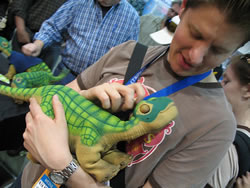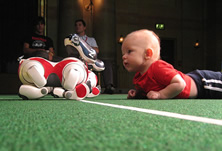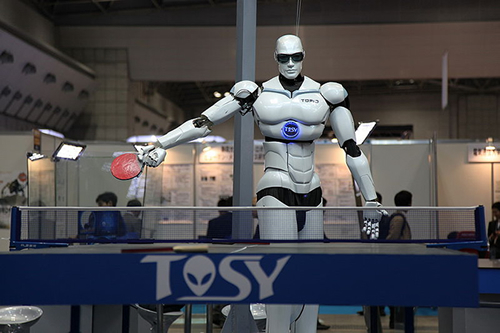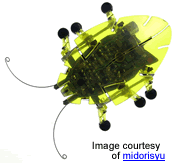Life Like Robots
 Robotic engineers are designing the next generation of robots to look, feel and act more human, to make it easier for us to warm up to a cold machine.
Robotic engineers are designing the next generation of robots to look, feel and act more human, to make it easier for us to warm up to a cold machine.
Realistic looking hair and skin with embedded sensors will allow robots to react naturally in their environment. For example, a robot that senses your touch on the shoulder and turns to greet you.
Subtle actions by robots that typically go unnoticed between people, help bring them to life and can also relay non verbal communication.
Artificial eyes that move and blink. Slight chest movements that simulate breathing. Man made muscles to change facial expressions. These are all must have attributes for the socially acceptable robots of the future.

The brain behind the beauty will be the key to turning a realistic looking machine into a life like robot. AI plays a pivotal role in successful human/robot interaction.
Links
Robotic Pets

Pets of the future might be robots with artificial intelligence.
Rescue Robots
Imagine yourself lost deep in the forest on a cold autumn night and nightfall is rapidly approaching. Too windy for search aircraft and too dark for ground teams, this could be a life threatening situation. Fortunately for you, it is ten years into the future and hundreds of tiny intelligent robots will be combing the woods for you throughout the night.
All terrain robots (ATRs), will truly function as a team by sharing their locations, discoveries, search patterns and more. Large ATRs could carry many smaller robots and provide them with localized control and power.
These smaller more specialized robots will have cameras, sonar, heat sensors, motion detectors and can be sent out by the large ATRs as needed. Smaller robots might work together to perform tasks such as moving a large obstacle.
Related Articles
Robotic Competitions

The ultimate goal of the RoboCup project is to develop a team of fully autonomous humanoid robots that can win against the human world champion team in soccer by the year 2050.
The FIRST Robotics Competition challenges teams of young people and their mentors to solve a common problem in a six-week timeframe using a standard "kit of parts" and a common set of rules. Teams build robots from the parts and enter them in competitions.
Robotic Prosthetics
Prosthetics are one of the best uses for robotics and man-machine interfaces.
Exoskeletons
Wearable bionic suits are being developed primarily for the military to allow soldiers to carry heavier loads and to conserve energy. Better uses for exoskeletons are assisting rescue workers move heavy objects and bionics for motor-impaired patients.
Robot Caretakers
Mobile robot assistants designed to people in daily life activities.


No comments:
Post a Comment